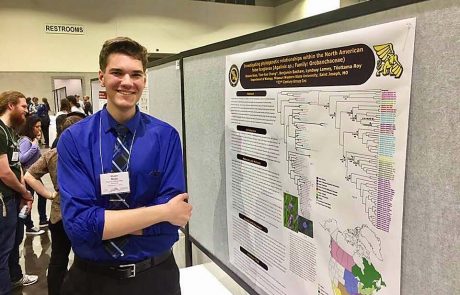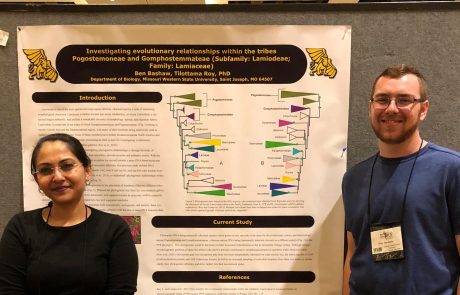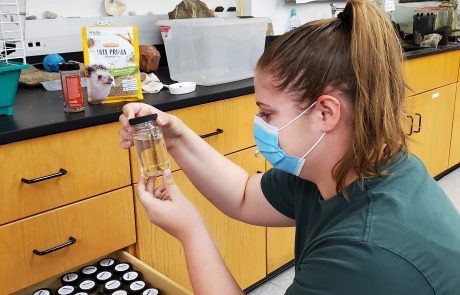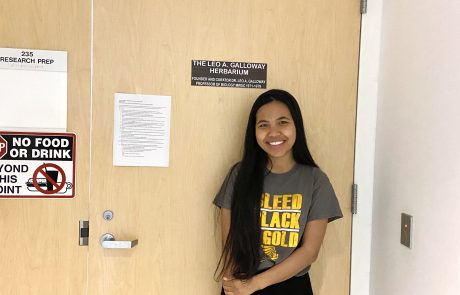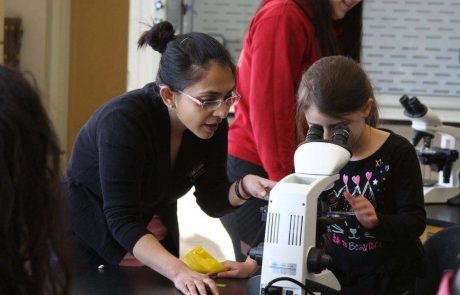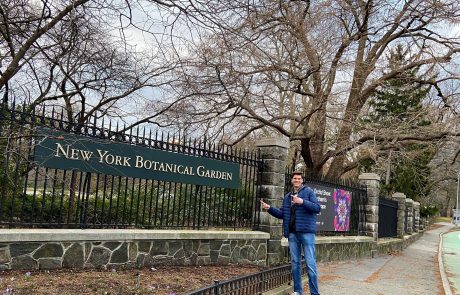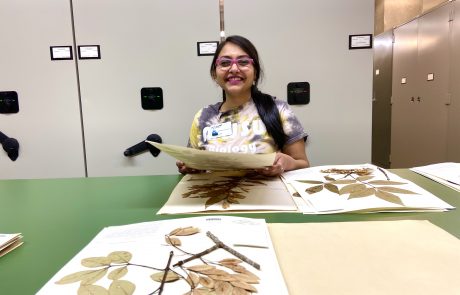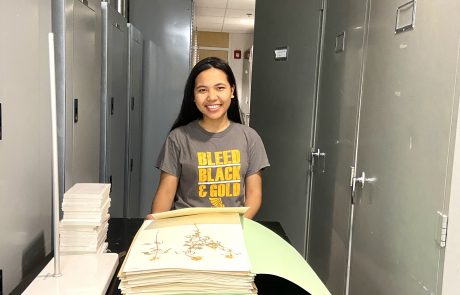
Dr. Tilottama Roy, Assistant Professor
(816) 271-4382 | troy1@missouriwestern.edu
Dr. Tilottama Roy has been at MWSU since 2017. Her research interests include understanding evolutionary origins and relationships among plants, as well as other organisms, with ecological and economic importance, including investigating their systematics/phylogenetics, speciation, and diversification processes.
Investigating the phylogeny and biogeography of three ecologically and economically interesting plant groups: the Lamioid mints, the North American Agalinis (“false foxgloves”), and the Rosinweeds.
The “mints”, the “false foxgloves”, and “rosinweeds” – How are the different members of these plant lineages related to each other? How and when have they migrated and diversified to the different parts of temperate North America, and have made the Midwestern prairies their forever homes? The key to the future conservation of these plant groups lies in the answers! Undergraduate students in my lab are investigating these questions with the help of DNA sequence data from various members of the above-mentioned plant groups, along with a variety of bioinformatics tools. Future plans include a genomic approach to understanding the evolutionary relationships and historical biogeography of these plant groups.
Requirements: A general interest in botany and a passing grade in BIO 105 or equivalent.
Creating a centralized database of biology and paleontology teaching specimens
This project is a collaborative effort with Dr. Karen Koy and Dr. Tilottama Roy. Natural history collections preserve an extensive record of life and form the basis of our understanding of biodiversity on our planet. We are interested in elucidating how the utilization of these well-preserved biological specimens in our undergraduate biology courses improves student learning. Just like the other projects, undergraduate students form an integral part of this initiative.
Requirements: Passing grade in any Biology or Earth Science course.
The Index Herbariorum Project
Herbaria consist of plant specimens that have been collected over broad geographic ranges and over many years. The Leo A. Galloway herbarium housed in the biology department at Missouri Western is comprised of dried, preserved and annotated specimens of ~ 3000 valuable plant species, particularly native to the mid-western United States. This project involves getting the entire herbarium collection present in our Leo A. Galloway herbarium listed and cataloged on the New York Botanical Garden’s Index Herbariorum website. Students are involved in reorganizing, recircumscribing, cataloging, and indexing all the specimens in our herbarium and preparing them to be listed on NYBG’s IH collection. Future plans include digitization of the herbarium specimens, to make them available to a broader audience interested in knowing more about flora of northwestern Missouri.
Biological Survey of the John Rushin Teaching and Research Prairie
One of the assets of the biology department at Missouri Western is the campus prairie, located just outside the campus. Encompassing 34 acres of unique prairie habitat, this area is a treasure trove for both the campus community, as well as botanists and nature lovers outside the campus. It provides a unique research opportunity. The initial goal of this project starts with the involvement of student researchers performing surveys of the plant communities present in this unique habitat.
Requirements: A grade of C or better in BIO105, BIO 225 preferred.
Survey of the plankton in the Missouri Western ponds
Requirements: A grade of C or better in BIO105, BIO 225 preferred.

About Dr. Tilottama Roy
Ph.D., Biological Sciences, State University of New York at Buffalo
M.S., Biology, University of South Dakota
M.S., Agriculture, University of Calcutta
B.S., Botany, Presidency College (University of Calcutta)
Contact Dr. Roy
Agenstein 237F
4525 Downs Drive
Saint Joseph, MO 64507
USA

